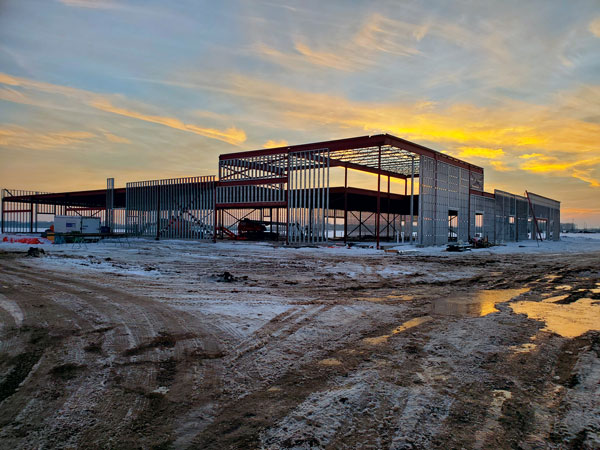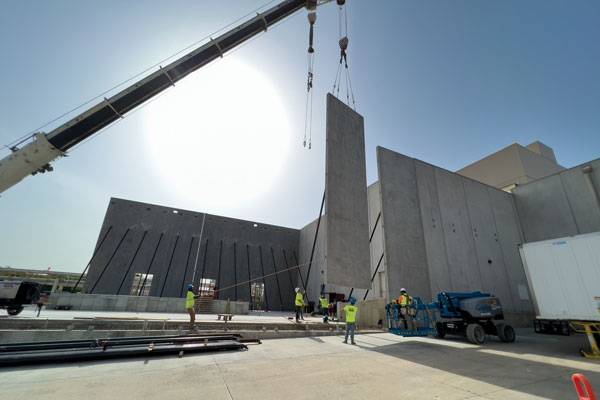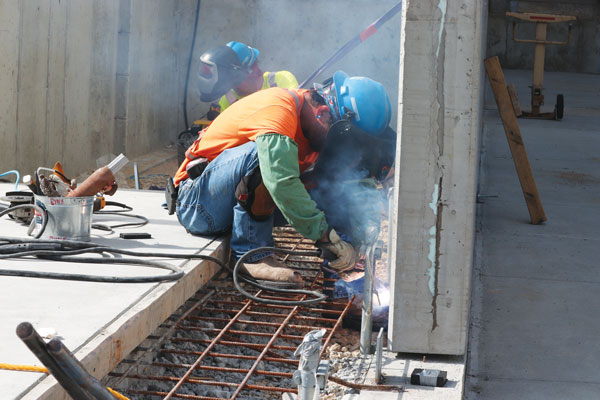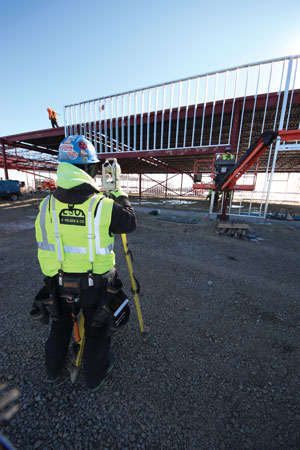Project Planning 101: Building the plan takes planning, too
 Construction craftsmen from Carl A. Nelson & Company pour a concrete slab for an industrial client, one concrete bucketful at a time. CANCO photo
Construction craftsmen from Carl A. Nelson & Company pour a concrete slab for an industrial client, one concrete bucketful at a time. CANCO photo
1 year, 8 months ago
Getting from the start of construction to a successful finish is a meticulous process of coordinating many moving parts.
By Craig T. Neises
Carl A. Nelson & Company
The design is finished. The bids are in. But the planning associated with your long-considered building project isn’t over when time comes to start turning up dirt and converting drawings into real-world concrete and steel
In our Project Planning 101 series, all previous installments — needs assessment and master planning, conceptual design and budgeting, and pre-construction — pointed to this one: the Construction Phase. Here in Part 4 of the series, we’ll review the planning that is undertaken by the builder during and throughout construction to ensure the new facility is completed on-time, safely and within budget, while also meeting your expectations for quality.
Managing schedule
Schedules are written long before construction begins, to ensure each of the various activities of the job — from the timing of installation of a specific system or structure to anticipating the effect of changes in season — is factored in. But starting the work moves those plans from theoretical to practical, when unforeseen and sometimes unavoidable challenges due to weather, supply-chain delays or discovery of an unforeseen problem can cause the project to get off-track.
At this stage, planning to maintain the schedule keeps the various parts of a project moving together in harmony. The lead contractor’s key role is close coordination of self-perform and subcontractor tasks that ensure the appropriate supplies, tools and personnel are at the jobsite when they are needed. Actively managing the schedule will help to minimize the occurrence of delays, and help reduce the impact of delays when the unexpected does occur.
Success includes long-term and short-term schedules, weekly contractor meetings with the project manager and superintendent, and daily huddles led by site supervisors. Clear communication of expectations and issues is key to staying in line with the schedule. Likewise, timely filing and processing of RFIs and other project paperwork keeps the work moving smoothly.


Carl A. Nelson & Company was awarded the framing and exterior packages for construction of the Outpatient Services Pavilion on the Great River Health campus in West Burlington, Iowa.
Maintaining safety
Few things can cause issues for a job like safety issues — whether it’s losing time to address an unsafe scaffolding or dealing with the aftermath of someone getting seriously hurt, or worse.
“Well-managed safety on a job is a well-managed job,” Carl A. Nelson & Company President Tim Seibert, P.E., said. “It goes everywhere.”
Daily conversations about safety, routine safety inspections by job site and corporate safety officials, and planning ahead to meet company, client and OSHA safety requirements, avoids injuries, keeps insurance costs lower, prevents fines and maintains positive relations with the Owner.
Monitoring quality
Hand-in-hand with safety on the project is quality control, as both require active intervention to maintain. In addition to managing the schedule and ensuring a safe job site, on-site supervisors’ role is to ensure self-performed and subcontractor work meets the accuracy and quality that is expected. The contractor should employ a process to evaluate the installed work to ensure it meets the specifications and the Owner’s expectations.
Controlling costs
The ability of the builder to control cost on the project, and thus meet budget targets, flows from each of the steps above. Failures on schedule, safety and quality each can result in costs increasing due to delays related to waiting for equipment or materials, inadequate staffing, safety-related shutdowns or rework due to poor performance.
Keeping costs in check also requires attention to detail on items that can add expense to a job, like having a crane on-site longer than necessary or replacing materials stolen from a site that is not properly secured.


Construction crew members from Carl A. Nelson & Company install pre-cast concrete wall panels for an industrial client in Iowa.
Closeout and Owner turnover
Just as important as planning to start a job is the planning that goes into being finished with it. Preparation for closeout begins early in the project with producing operations and maintenance documentation. As the project nears completion the contractor begins to plan for the final punch list with the Owner and design team representatives. In addition to gathering warranty information and operations manuals the contractor will schedule training for the various systems and equipment for the Owner’s staff.
Track record of success
Planning and executing a construction project is a complex task and, on occasion, unforeseeable bumps emerge on the path to the finish line. At Carl A. Nelson & Company, we smooth those bumps by relying on the professionalism and combined expertise of our team of construction engineers, construction managers, architects and field supervisors through a range of preliminary planning, pre-construction and construction services. It’s a large part of why more than 80% of our work comes from repeat and referred clients.
To learn more about how our team can bring its experience — as well as our commitment to Fairness and Honesty, Quality Workmanship and Service Second to None — to your next project, contact Dan Culp at (319) 754-8415, or write to canco@carlanelsonco.com.
